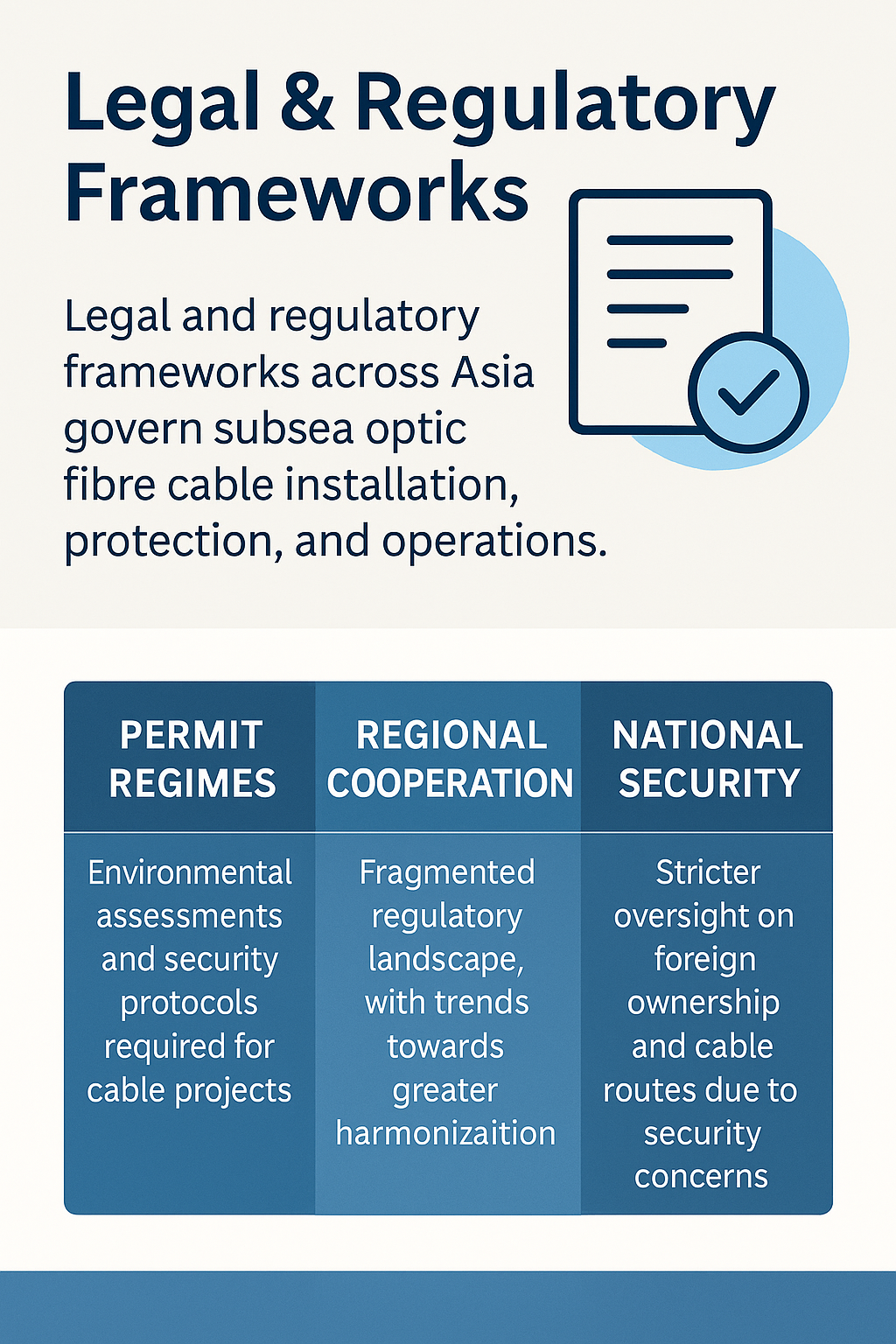Legal & Regulatory Frameworks on Undersea Cables

The legal and regulatory frameworks surrounding subsea optic fibre cable deployment across Asia are complex, diverse, and increasingly critical. Given that these cables are considered part of national critical infrastructure, many governments have introduced frameworks governing their installation, protection, and operations. Coastal nations such as Japan, Singapore, Indonesia, and the Philippines enforce varying permit regimes and environmental assessments for cable landings, territorial water access, and seabed usage. In addition, there is a growing trend of mandating security protocols to prevent sabotage or espionage, with some countries incorporating cyber resilience guidelines into cable project requirements. At the regional level, cooperative initiatives are still fragmented. While ASEAN and APEC have raised digital connectivity as a priority, there is no unified regional regulatory body for subsea cables. This creates challenges for operators managing transnational projects, who must navigate different legal interpretations on issues such as jurisdiction, taxation, and environmental compliance. However, emerging trends point toward greater regulatory harmonisation, especially as the private sector pushes for faster approvals and standardised documentation to meet growing bandwidth demands. In addition to legal formalities, national security concerns are influencing regulations. Countries like India and Vietnam have imposed stricter oversight on foreign ownership of infrastructure near sensitive areas, and China has increased scrutiny over cable routes passing through or near disputed waters. These developments indicate a shift toward strategic control over data routes, adding a geopolitical layer to the subsea cable deployment process.



